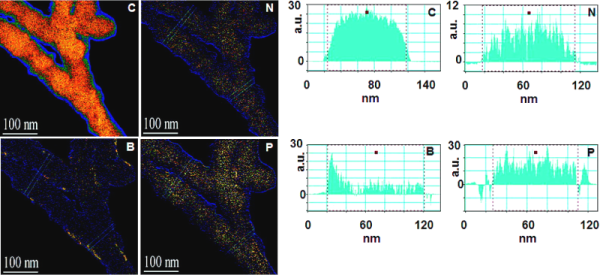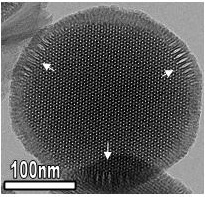Nanotechnology and Functional Materials
Department of Engineering Sciences, Uppsala University
Contact: Prof. Maria Strømme
personal.teknik.uu.se/Teknikvetenskaper/nfm/index.html
The Nanotechnology and Functional Materials (NFM) division consists of 22 researchers with backgrounds in engineering physics, chemistry, surface biotechnology, pharmaceutical technology and molecular medicine. NFM is a materials development group, with the main mission to create and analyze nanostructured materials at the forefront of science for use mainly in life science and energy storage applications. The NFM group also coordinates several national and international multidisciplinary projects aiming at developing nanomaterials for strategic applications as well as contributing to the general public’s understanding of nanomaterials research; its present standing, opportunities and risks. The MSL facilities are important for the work of the group, as shown in two examples of projects given below. Further information and publication references can be found on the group homepage (above).
Conductive High Surface Area Papers for Use in Batteries and Biomolecule Separation
Conductive polymers have been in the focus for the past 30 years since their discovery. They exhibit excellent conductive properties and can be used in a multitude of applications including electrochemically controlled ion-exchange membranes, supercapacitors and batteries, sensor devices, etc. By polymerizing polypyrrole (PPy) on large specific surface area Cladophora cellulose, we obtain a flexible, moldable paper material with high ion sorption capacity. The PPy-cellulose composite is used to develop environmentally friendly batteries and supercapacitors. In several sub projects the composites are used in electrochemically controlled ion-exchange membranes for separation of biologically active substances, e.g. DNA. SEM and TEM are important tools for the characterization of the cellulose-polypyrrole composites.

Energy-Filtered Transmission Electron Microscopy (EFTEM) investigation of a PPy-cellulose composite containing single stranded DNA. The figure shows the intensity profiles for carbon, nitrogen, boron and phosphorus [J. Phys. Chem. B, 2010, 114, 13644].
Development of Mesoporous Materials
The NFM division possesses a unique competence in the development of mesoporous materials, and we have described 7 of the presently 20 known mesoporous structures (space group symmetries). The research into nanomaterial synthesis is closely coupled to the application of mesoporous materials within life science applications such as; drug delivery, novel adjuvants and novel excipients with cell targeting properties.
The NFM group was the first to show how mesoporous nanoparticles are taken up in human antigen presenting dendritic cells (the sentinels of the human immune system) and how they cause the immune system to react. Researchers in the NFM group are active participants in the emerging field of nanoparticle toxicology, contributing both original research articles and reviews of the field. TEM is an indispensable tool in the characterisation of mesoporous materials.

Typical high resolution TEM image of a mesoporous cubic material along [111] (Ia3-d symmetry).